If you’re looking at getting a new laptop or computer, you’ve got to decide between the two main operating systems; Mac and Windows. These two pieces of software are made by different companies, but their actual differences go way beyond a simple logo.
Whilst Windows computers are still the most used on the market, Apple has narrowed the gap down in the past few years – and there’s a good reason for that. It can often come down to personal preference, but there are some features that make one better than the other.
If you can get used to the steep learning curve with Apple products, then for certain activities (like design), they can be the superior choice. Let’s check out both of them so you can work out the best operating system and which one offers a greater experience for your needs.
Mac vs Windows Laptops – Which is best?
Windows is by far the market leader, with approximately 80% of computers running the operating system. This may make it seem like the obvious choice of the two.
However, the truth is that they’re actually declining in popularity, with competitors like Apple taking up more of the market. At the start of 2010, Apple only made up 5% of the laptop and desktop market, whereas now they’re closer to 15% of the overall share. There’s been an increase in users for alternative operating systems like Linux too.
And using a Mac is a completely different experience from a Windows PC. Each has its own pros and cons depending on what it is you’re looking for in a laptop or computer. So, what’s the actual difference? If you’re new to computing, then I’ll run through the basics pretty quickly.
Basic Overview: Macs and PCs
The first big, glaring difference that jumps to mind is that they’re made by different manufacturers. This might sound simple and obvious (it is), but it’s actually a crucial reason why Apple has increased so much in popularity over the last decade.
Windows PCs can be made by a whole range of companies that all have Microsoft’s operating system pre-installed. Whilst Microsoft, who makes Windows, does have their own line of laptops too, other brands have to licence their software for their device.
This means that a Windows laptop comes in different brands – Lenovo, Dell and HP being a few of the main ones. In comparison to this, Macs are only made by Apple. In some people’s eyes, this gives them the advantage of controlling both the software and the hardware in their devices, whereas Windows only make the software.
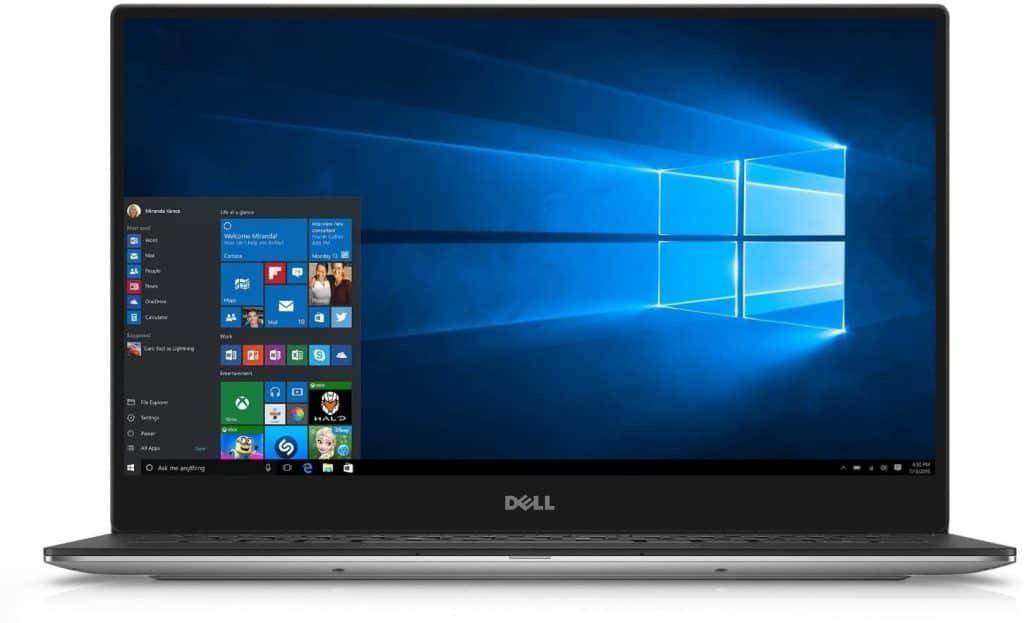
We can see this now more than ever before. How? Well, with the release of Apple’s M1 chip, they’re really proving the advantage of being in control of everything. Apple makes the laptop or computer hardware itself, the operating system and now the processor and graphics card too.
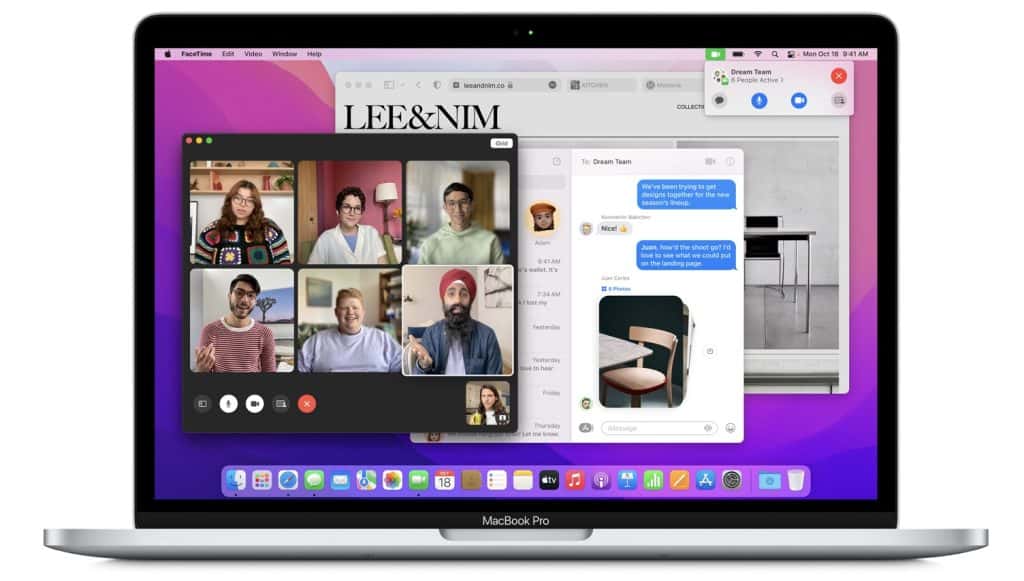
Whereas with a Windows laptop, you may have Dell make the laptop hardware, Microsoft create the operating system and then have to rely on Intel or AMD for the processor. The M chips look like they’re going to be a game changer for the iMac and Macbooks in the coming years, with newer, more powerful processors on the immediate horizon for Apple computers.
Apple devices are custom-built to run a Mac OS, and their hardware is integrated seamlessly into the user experience. The Mac OS can only run on Mac computers. These are Apple manufactured and built specifically for using this OS.
Windows is made by Microsoft and can run on a variety of devices. You can even boot windows up on your Mac if you’re inclined towards that.
The Mac OS: Easy to use, less vulnerability but also less programs

Macs are essentially just PCs built to run the Mac OS. They feature a different interface that is pretty distant from what you might know in Windows.
As we’ve already touched on, one of the main differences is that Macs are only produced by Apple. This means the hardware and software you’re using are considerably more in-sync.
You won’t be locked out of any feature by your hardware as you would with a PC. This has a lot of benefits, especially if you’re looking for a smooth and polished experience.
In terms of security, Macs tend to be safer. They’re more stable since their software and hardware are in sync. There also isn’t as much malware created to attack Macs. This is largely due to the amounts of them out there in the world, as most malware is made for Windows devices.
Since PCs are used by 80% of the world, a hacker would get better results targeting them for your malicious malware. This doesn’t mean there aren’t viruses for Macs, but they’re a lot rarer since there are fewer potential victims.
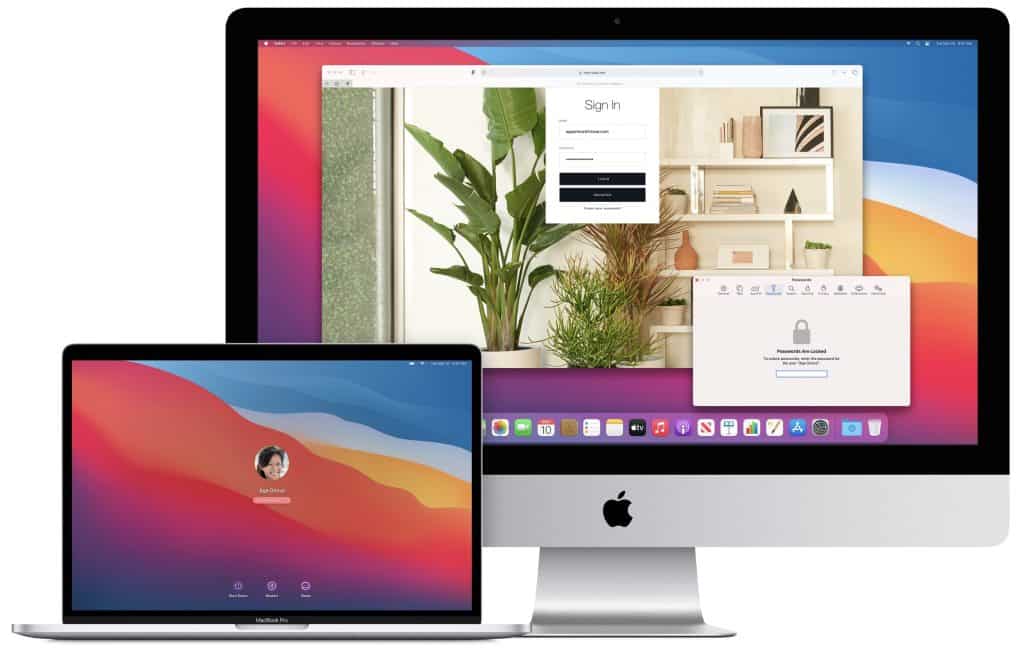
One big drawback of Macs is they aren’t very modular or repairable. Apple would prefer it if you never touched the insides of your Mac and replaced it the second it slowed down or broke.
They have this approach to everything they make. This is criticised as being anti-consumer, and it has even gotten them into trouble with regulators before.
This isn’t the end of the world, though. There are repairs available to you both from Apple and third-party repairers, but parts are more expensive, and it often voids your warranty to fiddle with anything outside of an Apple store.
Pros
With Apple products, there are a few things that stand out when considering what is good about them. Here’s a few of their best points.
- Integrated Hardware and Software – Makes it easier for the two to work in tandem together.
- Greater Stability – Less chance that you’ll have to completely reboot your computer.
- Fewer Malware Risks – Barely any viruses created to attack Macbooks compared to Windows.
- Integrated with iPhones, iPads, and iPods at a core level – Perfect if you want to have connectivity between all your devices.
- Intuitive and Easy to Use Interface – Probably their best feature, as they’re very easy for you to use.
- All OS Updates are Free – Never have to worry about updates costing you anything in the future.
Cons
At the other end, although Mac users may tell you their laptop is perfect, this isn’t actually the case. There’s more than 1 criticism about their products.
- Not Very Repairable – If anything goes wrong, you’ll rely on Apple to fix it at a big cost.
- Can’t upgrade – You can’t even add any extra RAM into Apple products which is frustrating.
- More Expensive than PCs – Typically carry a premium over Windows laptops.
- Less Software Available – Although most things are created for both Windows and Apple, some software is Windows only. In the modern day, this is definitely less and less of a problem, but you’ll still find some software that’s Windows only.
Benefits of a Macbook (Using the Mac OS)
Here are some of the benefits of choosing a Macbook over a Windows laptop.
- It will crash less – Although newer Windows laptops are less likely to crash than ever, they typically will still crash on occasion. In comparison to this, I’ve used Macbook’s for a decade and none of them have ever crashed. So if you want more stability, then a Macbook might be a good idea.
- It has a much cleaner user experience – If we’re being honest, the main reason that people opt to use Macs nowadays is that the user experience is better. Obviously this is subjective, but many people find the design and functionality of a Macbook far better than the Windows alternative.
- Easy integration with iPhone – Another very prominent reason why people opt for a Macbook is that it’s very easy to integrate it with your iPhone. This means that you can easily get your emails, messages and contacts up on your laptop without any hassle. This can be a bit of a chore with a Windows laptop. You can even take calls on your Macbook if you have an iPhone linked up to it.
- (Almost) No viruses – Although Macbooks can still get viruses, they are much less likely than if you’re using a Windows laptop. However with a Windows laptop, you will get viruses if you don’t have a good anti virus software in place,
- Easy cloud integration – If you’re happy using cloud storage, then this is another reason why you should opt for a Mac. Syncing all your devices up with the iCloud makes for a seamless experience.
- The trackpad is 10x better – Okay, I might be a little biased on this one but using the trackpad on a Macbook is a ton easier than using the trackpad on say, a Lenovo Thinkpad. It just makes the whole experience easier and you can easily scroll with a Macbook trackpad.
Windows OS

Windows PCs are the vast majority of devices out there, so it is actually quite hard to make any generalisations about them. This is kind of what makes them different from Macs. With a Mac, you have a choice between a big Mac or a small Mac – and that’s about it.
A desktop Mac, MacBook Pro, and MacBook air all run essentially the same but with a few added features. If we tried to list all the different devices that can run windows you would be here for a very long time.
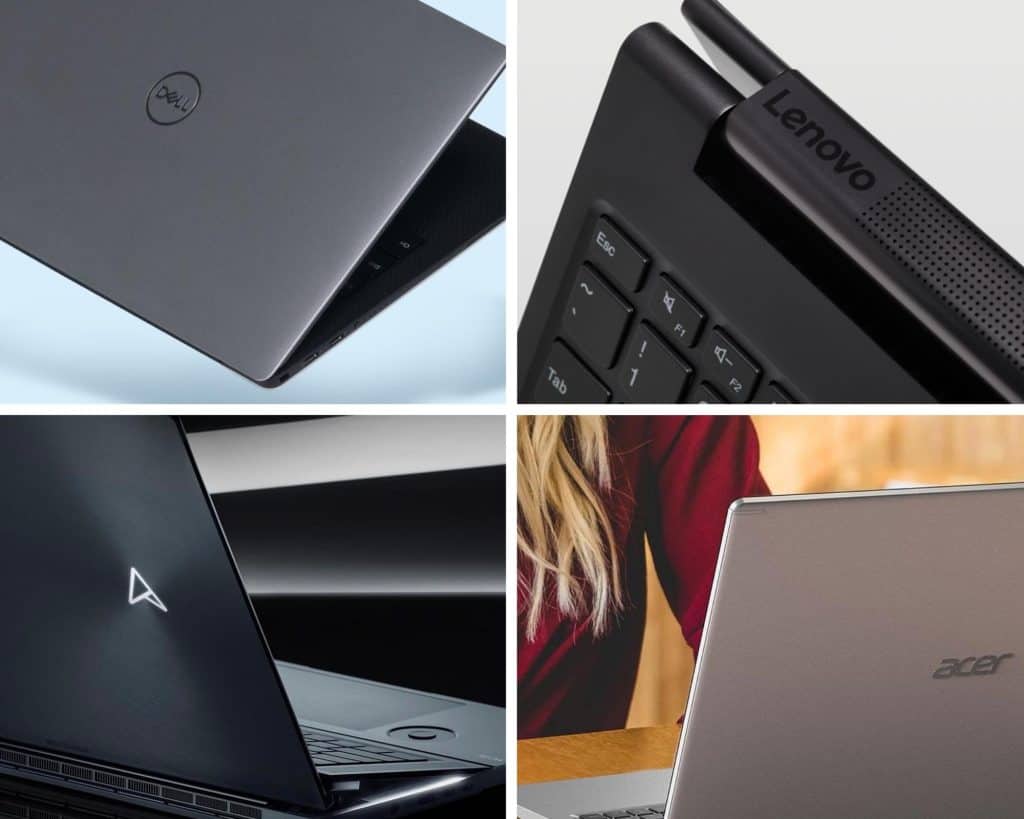
Windows is an operating system that is built to work in as many varied places as possible. This is comparable to Android; the focus is on building an accessible platform. It means that Windows PCs are generally the norm, most computers just run Windows as standard.
Windows PCs have a much greater software library since they have a bigger audience. They also have a much bigger library of malware and viruses though. Proper protective software is a lot more important on a PC than a Mac.
One big benefit of having an operating system that runs on just about anything is how upgradable a PC is. You can swap out components, mess around with elements of your build, or even put an entire PC together from odd parts and have it run windows.
Pros
In the argument between the two, there are those that think Windows is best. Here’s a few of the reasons why they might think so.
- Cheaper – On average, Windows laptops average out as cheaper than their Apple counterparts.
- Runs on a Variety of Devices – You can run Microsoft Windows 10 on different devices.
- Much Wider Software Library – The ability to download more software with a Windows laptop is undeniable.
- Upgradable, Repairable, and Modular – You can extend the lifespan of your Windows laptop by upgrading it further down the line (typically not the graphics card though).
Cons
In the battle between Mac vs PC, it’s only fair we mention the downsides you may face with a Windows device too.
- Can be more Technical – The more technically minded folk will be able to make use of a Windows laptop better.
- Much Bigger Risk of Malware – The vast majority of viruses like trojan horses are created for Microsoft Windows.
- One Size Fits all Approach isn’t the Best for All Devices – Windows being the most popular doesn’t mean it’s the best.
- OS Updates Aren’t Free or Cheap – There might be cases where an OS update will actually cost you money.
Benefits of using a Windows Laptop (Windows OS)
It’s only fair that we look at some of the advantages of using a Windows laptop, too!
- Windows laptops are often cheaper – Okay, I’m as big of a fan as Macbooks as anyone, but let’s be honest – they’re way too expensive. For the amount you pay for an 8GB laptop with Apple, you could buy a 16GB laptop with most of the other brands out there. With Apple, you’re really paying for the GUI and customer service. If this isn’t of the utmost importance to you, then a Windows laptop might be better.
- You can upgrade them later down the line – This isn’t the case for all Windows laptops, but with many of them you’ll have the option to upgrade later down the line. This isn’t the case with new Apple laptops, as they’re making it more difficult for users to upgrade the laptop themselves.
- Cheaper support – Although Apple support is good, it’s really expensive and they’ll only help you if your machine is in warranty. However, to combat this many Windows laptops are being sold with free warranties or cheaper warranties, which is definitely valuable for those buying a new laptop.
- Abundance of ports – In danger of this turning into a rant about my love and hate of Apple, the last thing I’ll mention is the ports. Apple laptops nowadays have two ports on the side, with no USB port. This means that most people end up having to buy an adapter to plug in their USB sticks to charge anything! Most Windows laptops will still come with USB ports, and some will come with more than that (HDMI etc).
What is similar with Mac and Windows?

Mac and Windows might be pretty different, but they have a lot of similarities. If you’re looking to switch between them, these are the things that will essentially still be the same
- Both are compatible with the vast majority of peripherals. Mice and keyboards will work on both operating systems, although Macs don’t require drivers to be manually installed, updated, and maintained.
- Both have inbuilt voice assistants. Macs have Siri and Microsoft has Cortana.
- They both run many of the same programs. If you’re looking to use Microsoft Office, Unity, or any other specific program you’ll likely find it can run on both Mac and Windows. There are exceptions to this, but the major software producers make their software available on both Mac and PC.
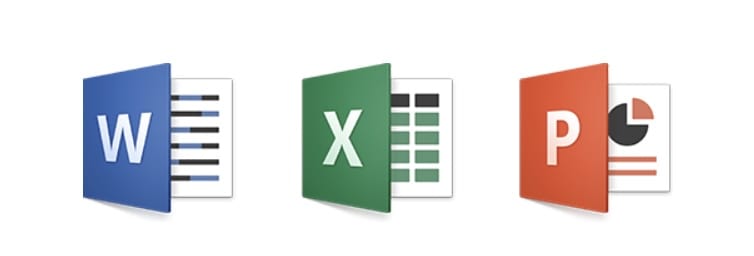
- You can use a right-click on both. This is worth mentioning since so many people think Macs are inherently incompatible with a right-click. Using an external mouse or assigning one half of your trackpad as a right-click restores this functionality. However, Macs are designed around keyboard shortcuts rather than right-clicking.
Which is better, Mac or PC?

Ultimately which is better out of these two operating systems is going to come down to which type of device you’re looking for. If you’re building a gaming PC, then Windows is pretty much your only choice.
A lot of games don’t run on Mac, and they’re incompatible with the modular upgrade system that allows for most gaming PCs to be upgraded over time.
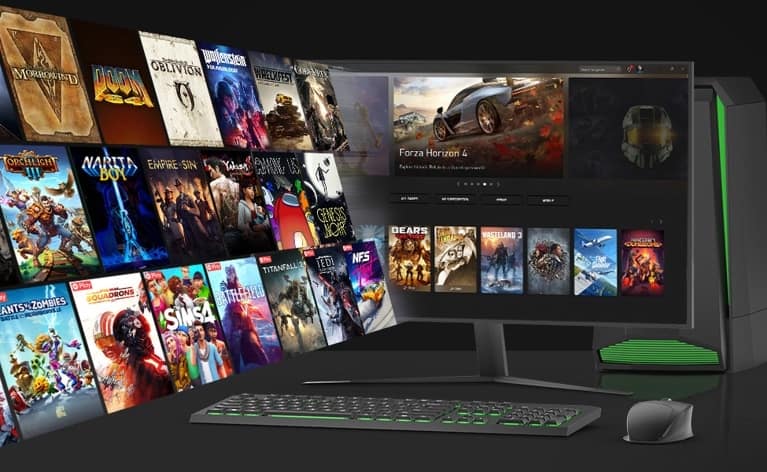
Mac hardware is locked out of high-performing games. Equally, if you’re looking for something on a budget that you can repair and upgrade as you need to rather than replacing wholesale, then a PC is better for you.
If you go for a Mac, it is specifically because you want a Mac. Its pros are essential that it is a lot more cohesive and gives a different experience. They cost more, often lack software, and can be complicated for people who have only ever used Windows PCs.
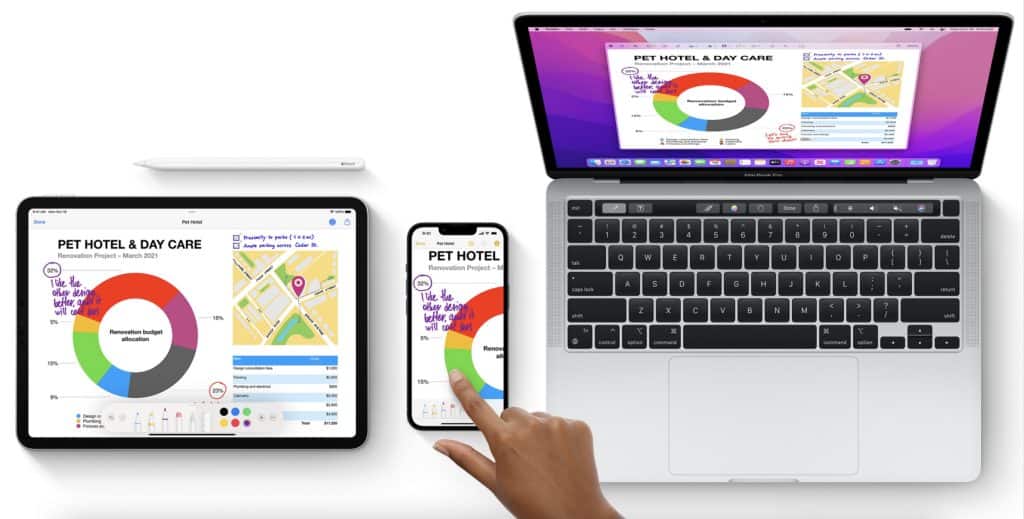
However, these pros are definitely worth it for some people. But, if you’re looking for a laptop on a budget, then a Mac isn’t going to be for you.
Macs provide a fluid intuitive experience, and you don’t need to spend much time researching which device to buy. Every Mac can handle the majority of office activities without breaking a sweat, which makes them a lot easier to buy than a Windows PC.
The difference between Mac and Windows comes down to a lot of factors, but your choice between them only comes down to what you want from a PC.
Most people struggle to decide between the two, so don’t worry if you are – you definitely aren’t alone. In my mind, it’s quite simple to decide whether you should opt for one over the other.

If you’re want the best deal possible, are an avid gamer, use Microsoft Excel a lot or you want more control over your laptop in general, then you should definitely opt for Windows. Windows laptops will give you a powerful laptop for your price.
However if you’re a graphic designer or an artist, or you want a simple experience, then it’s a better idea to opt for Apple, as their user experience is second to none in my opinion.
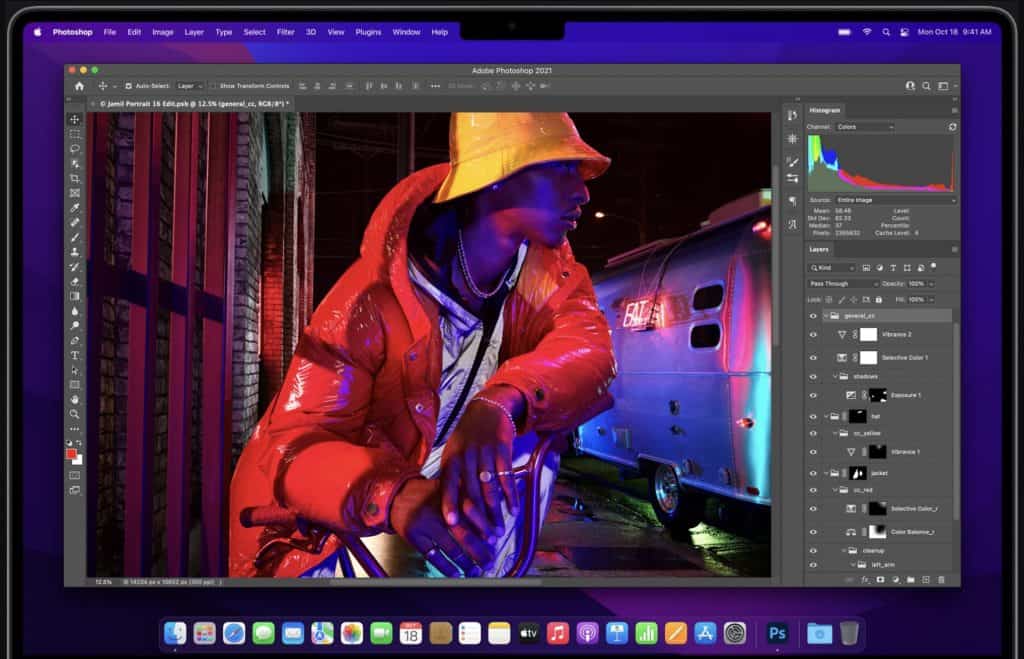
Do Macs last longer than Windows?
If you’re comparing a Mac to a Lenovo Thinkpad, then I wouldn’t say that they last much longer on average. But the Thinkpad is just one specific type of Windows laptop. If we compare across the whole board, then generally Macs will last longer than a Windows laptop. Apple put a lot of time into making their products durable and they last for longer than the average laptop.
Do Macs need antivirus like Windows?
One thing that you’ve probably heard is that Macs are less susceptible to viruses than Windows laptop. This is true, as Macs are UNIX based, which is generally safer than a Windows laptop.
Is it hard to switch from Windows to Mac?
If you’re a little worried about making the switch between the two, then you don’t need to think about it too much. For most people, it might take a few weeks for them to get used to using a Macbook. But after this, you should get used to the device pretty easily and find it straightforward for you to use.
Is Windows 10 free for Mac?
If you want to use Windows 10 on your Macbook, then you can still do so pretty easily. You can use Boot Camp Assistant to set Windows 10 up on your Apple laptop. It is a fairly straightforward process, although many people prefer to stay with the Mac OS.
Is Mac faster than Windows?
Again, if you compare a Macbook to a standard Windows laptop, then a Mac is going to be faster. But that’s because Mac only really deal in premium computers. If you compare a Macbook Air to a premium line from a Windows brand, then you’re not going to notice much difference in terms of speed.
What is an operating system?
At their simplest, Mac and Windows boil down to their operating systems. This is the software that runs your PC, everything that you interact with when you’re using it. It’s an important software, as it allows your laptop and all of the programs you install to work together.
Conclusion
Overall, these are just a few reasons why I’d opt for one brand over the other. The reality is that both brands have their ups and downs, and it really depends on your criteria and what you want from a laptop more than anything else.
It’s difficult to compare them in terms of build quality, as each model will be slightly different. It’s fair to say that on average, Macs are the better choice – but that’s only averaging them both out (and Apple only have two laptops to choose from!).
They’re likely to prove better for different tasks. If video editing and other graphic design jobs, a higher end Macbook will probably be the better option. But if you want more for your money, then you’re definitely better sticking with Windows.
Thinking of buying a new computer? If you need help choosing an operating system, we give you 5 reasons why Windows is better than Mac.
Thinking of buying a new computer? If you have not yet decided on a model (or operating system), we are going to give you five reasons why Windows is better than Mac to help you make your choice. In other words, reasons why you should consider buying a Windows PC before an Apple computer.
We will agree on something: Microsoft’s operating system is by far the most popular and used by users around the world. While deployment and usage data alone cannot determine that it is the best operating system, just being the standard alternative gives it a number of benefits that macOS does not enjoy.
In this case, we will explain the opposite: the reasons why Microsoft’s operating system is better than Apple’s. The main reasons why Windows is better than Mac are that the price of the equipment is cheaper, that it offers greater flexibility than Apple when configuring a computer or that it has a wider catalog of both programs and video games.

In addition, as it is the most widely used operating system, software, accessories and peripheral manufacturers take it more into account when developing their products, so you will have much less compatibility problems. Here are the main reasons to choose a Windows computer.
5. Windows computers are cheaper
Price is one of the main advantages of Windows over Mac. While buying a new Apple computer costs more than 1,000 euros from the most basic alternative, we can find a wide range of Windows computers below that price that perfectly meet the needs of many users.
It should be noted that it is possible to configure a PC in parts with the same power and performance as a Mac at a cheaper price. In addition, you must also bear in mind that if you have to carry out repairs or replace a component, if you have an Apple computer it will be more expensive than if you have a Windows computer.
- Windows offers more flexibility
Another reason why Windows is better than Mac is that it provides greater flexibility than Apple for the user to configure the computer according to their personal requirements and needs.
To buy a Mac we have to choose between the models and configurations available in the Apple store or authorized distributors, and the possibilities of updating and improvement are practically non-existent without the intervention of the technical service of the Cupertino Company.
On the contrary, users have endless possibilities to configure a PC in pieces. You have the option to choose the processor that interests you the most, the graphics card that best suits your needs, or the memory you prefer. In addition, as we said in the previous point, the price will be cheaper than that of an Apple computer. For example, you can assemble and configure your gaming PC for less than 600 euros .
3. Touch screen, Windows only
A touch screen computer can be very useful for carrying out a variety of tasks, such as taking notes by hand with a digital pen or making freehand drawings and sketches. If you are interested in this feature, Windows offers you support for the use of this type of screen and is betting heavily on it throughout its Surface range.
However, Apple has shown no interest in incorporating this feature into its desktops or laptops – beyond the iPad Pro -. Therefore, if you would like to enjoy the advantages of a touch screen, the operating system that allows you to do so is Windows.
- The video game catalog is much broader
If you are a gamer, Windows is a better operating system for you than macOS . Although in recent years we have increasingly found more games for Mac, the truth is that the video game catalog is much broader and more varied in the case of Windows.
To check this, for example, just take a look at the Steam catalog. If we filter the titles available on Valve’s platform by operating system, we can see that for Windows there are more than twice as many video games as for Mac . For this reason, macOS users who want to run PC games on their Mac have to resort to solutions such as installing Windows with Boot Camp .
In addition to the variety of the catalog, gamers prefer Microsoft’s operating system to play video games because PCs are customizable, while the same cannot be said for Macs , which are almost impossible to update or modify, and certainly not at an affordable price.
As we mentioned in point 4, all components, from the processor to the graphics card or memory, are susceptible to being updated in order to optimize performance to get the most out of video games.
1. Windows is the “standard” operating system
Another of the main reasons why Windows is better than Mac is that Microsoft’s operating system is by far the most widely used on the market. According to data collected by Net Market Share , last December Windows led the ranking with a market share of 88.51% , followed very far by macOS with 9.02% and Linux by 2.12% .
In practice, the fact that Windows is the standard operating system means that, when developing new products, companies give priority to versions for Windows in order to reach a greater number of users . This is the reason why many applications, video games, accessories and peripherals are only available for PCs, and not for Mac.
Therefore, having a computer with Microsoft’s operating system guarantees compatibility with many more products than macOS , a very good reason to opt for Windows when buying a computer.
Microsoft’s CEO pieces together the relationship between developing software and achieving market dominance.
This week, Microsoft CEO Bill Gates hit San Francisco for the official launch of Internet Explorer 4.0 and sat down with editors at CNET’s headquarters to talk about software, standards, and market strategies.
Does the AOL purchase of CompuServe change your goals with MSN?
Oh, they don’t make much money. It’s not like some model of «Oh, hey, you just do the data—you’ll make a lot of money! Now, how much?» No, I think their purchasing CompuServe is interesting. It gives them the big number. It makes us No. 2 clearly. They’re a very strong No. 1 in terms of just numbers…I would say it changes our strategy.
All things Microsoft: CEO Bill Gates in a CNET interview. |
But they haven’t made a dime in 12 years or as long as they’ve been in business. How long will you go investing in MSN and some of these online ventures before you pull the plug?
Well, I have a longer time horizon than most other players in the market. So as long as I think that the net present value of the activity is a significant positive number, the fact that the near-term years are negative numbers doesn’t bother me. I’m going to be here in ten years. But if I decide that the net present value summed all over those years is never going to work out, then hey, why do the thing?
I have two measures for the people who do interactive stuff: Are you No. 1 or No. 2 and if you’re not, then I don’t think No. 3 or No. 4, no matter how many people are there and all, I don’t think they’re going to do that well. And is your category developing enough that it’s going to be a significant category? So some of the things that we’re doing in that area I’m sure will be quite successful and then some of them may not be.
Will it take you ten years do you think?
I don’t see any of them that will take ten years at this point.
When do you think that technology for WebTV will be acceptable, that a lot more consumers will go out and buy it? Is it a year?
I think we’re going to have a big Christmas this year. But when you talk to the people who use WebTV, they’re very enthused. Or when you talk to people…say I’ve got a relative, all they want to do is email and I’m going to get them set up on WebTV. There’s this very strong reaction to the product. And so I think it’s ripe to do very well. Last year it was a totally new product category. We had to get the distribution going—it wasn’t us at the time, it was just WebTV as a small company. Now they’ve got the Microsoft brand. We’re going to put quite a bit more marketing behind it. We’ve got Sony and Philips and now Mitsubishi will have a product this year.
So I can virtually guarantee we’ll do twice as much this Christmas as last year. Will we do four times as much? Five times as much? That’s hard to say. It’s the word of mouth spreading and how people see the product fit-in. So we think this year there will be a big uptick and then the next year after that…It’s not just at Christmas, but it will share the same kind of seasonality that home PCs do or a little bit greater.
Do you see Java to be a bigger competitive threat than Navigator/Communicator?
Well, we’re the most successful provider of Java tools in the marketplace. Visual J++ is doing extremely well. In terms of performance, debugging, rich development environment…I feel like our Java guys have done a great job in the marketplaces responding to that.
So Java, the language, we see as an important language. In no sense is that a competitor. Now does it mean C is going to go away? We don’t think so. In fact when I was at the PDC [Professional Developers Conference] I said, «Oh, I think C for the group there, that C will continue to be the most popular language.» And there’s this huge applause. It’s like, «OK. Hope you love C. Go ahead, stick with it.» So it will be an important language: VB, C, COBOL, and then there’s some like PowerSoft, ABAP, that will be there. Delphi as well.
In terms of the notion that people are going to write applications that don’t take advantage of an operating system—that’s where you see a difference in opinion. When I buy an application, I say «Hey, does it use my security model? Does it use my user interface model? Does it use the clipboard? Does it integrate in with the other applications? Does it use what this platform is fastest [at], does it make the graphics calls that this platform is optimized for?»
So as a buyer of an application that somebody says to me, «No, I’m not taking advantage of anything in your operating system,» I’m not sure how strong of a pitch that is. But if they say «OK, well I’ve got this duplicate operating system I layer on top of that»…Just think Macintosh. For Microsoft, how strong of a pitch was that for the old Mac user to say, «By the way, this application adds nothing specific to the Mac—no balloon help, no color management, none of the user interface guidelines. This application is for me, the developer. I was lazy, and because I wanted it to run on a wristwatch, sure I only used 100K of memory and I only used this much of this much of the screen because, hey, I wanted it to run on a wristwatch, so I don’t use this thing.»
There’s a question of will people write applications that actually use the rich environments: storage, scheduling, graphics—you name it—or won’t they. We think they will, whether it’s our environment or Apple’s environment. Now they can do that in Java and other languages. I wouldn’t say it’s a big competitor. That’s just a question of «Do users want exploited applications?» It’s not a competitor. We compete with Solaris now—their volume versus Windows’ volume or even just NT volume. It’s not huge, but they do sell into a part of the market that we are doing better and better in all the time. And we’re quite focused on «OK, what is it that we need to win even more of that business?»
Would you clarify the controversy over the Java licensing. Is it going to end up in court, as Sun says?
Well, Sun took an unusual position because they’re sort of not only the brand-name holder of Java, but they’re also a competitor of ours in terms of selling operating systems. We’ve done very good Java implementations. I mean everybody can just look at them—run the test cases, see how they work, see what the speed is. That’s the objective data.
The fact that Sun is afraid of us—just go to any of their speeches, they talk about Microsoft. Sometimes they forget to mention Sun. So is Sun thinking about Microsoft? Apparently. Are they thinking friendly thoughts? It doesn’t sound like it. You have to ask them. But it’s not sounding too friendly. Now does this mean they’re feeling some pressure on overpriced workstations? Potentially.
And it’s tough, it’s tough to compete with a PC model when you say, «We’re open,» but then it turns out that as soon as you buy one of the Solaris systems, it’s very hard to buy hardware from somebody else. Whereas in the PC world, you buy hardware from Compaq today, HP tomorrow, and IBM the next day. Which is open? Which gives you the most choices of applications, which gives you the most choices of peripherals, which seems to be the most competitive in terms of basic system pricing?
And so Sun is in the model of the classical computer companies where the hardware and software are tied together. And we don’t represent that model. We’re part of the PC model, which is Compaq, Gateway, Dell. Many, many companies are playing in the PC model, which has become a huge part of the computer industry, the majority of it.
What exactly is the issue when they come out and they made these public pronouncements that Microsoft wasn’t following the licensing agreement?
Well, I think it’s very consistent with everything else they say. They appear to think we’re a competitor…and they want to say anything they can. Certainly we’re following the license. And if they honestly don’t believe we’re following the license, at some point they’ll describe that to us.
It was reported that Sun is going to examine IE 4 code and if there are inconsistencies, they might look into taking this to court?
When we did the beta of IE 4, they had a certain set of test cases and when we do the beta we said «OK,» and this is what we have agreed, is when we did the beta, there were a certain set of test cases—we passed all those test cases. Now they added test cases have nothing to do with running Java applications subsequently. And I know that [Microsoft group vice president of applications and platforms Paul] Maritz is talking to them about that. We passed the test better than anybody. I mean, just go look out there, run the test cases. And ask yourself why are they raising some that doesn’t really have anything to do with compatibility with Java applications. By every objective measure we’ve done a very good job on Java and if they’re going to attack us, fine. I think that’s what they seem to do on Monday through Friday and on weekends, if they’re working. So we’ll put up with that. We’re not attacking back.
What do your customers say? Are they confused? Are they sitting on the fence saying «Geez, here we go again!»?
What fence would they be sitting on?
Do they say «Geez, let me just see where and how this thing plays out before I devote 20 programmers to do just Java-only applications?»
Well, most people are buying packaged applications and modifying those or working on applications they already have. So what’s the most popular corporate development language? VB by a factor of three over the next, which is C, which is a primary tool that is far more popular than the next, which is COBOL.
So there are a lot of different things people do in development, most of which is incremental improvement. If what you’re saying is that Sun is screwing themselves, that to the degree they make these complaints, it makes people concerned about using Java, then you should mention that to Sun. We’re not making any complaints. So if they want to scare the people, I guess they must enjoy doing it. It certainly gets their names in the paper.
Oracle has often said that SQL Server doesn’t represent a huge threat to them. I’m wondering about your view as Sphinx [the next version of SQL Server] gets ready to roll out, and how that might play out in terms of Oracle 8?
I think they underestimated, so don’t tell them. If they think it’s not a threat, they should take the rest of the day off and the rest of the month too.
How do you close the gap?
Well, there’s a general approach. This [Sphinx] started about three years [ago]. You start hiring very good people. You say «Hmm, who should we hire?» Look at our database team and look at the amount we’ve put into database R&D and look at Sphinx betas. It’s an objective world and maybe Oracle is right—we don’t know how to write software. I’m not going to clue them in. But there are people who are working long hours building an amazing database product.
Do you think enterprise customers want to buy a package of BackOffice-bundled applications that includes a database? Or do you think they may still want sort of a best-of-breed approach with an Oracle style?
Look at Microsoft Office. How did we win? Well, we won every spreadsheet review with Excel. We won every word processing review with Word. We won most presentation reviews—not all—with PowerPoint. We did best-of-breed products, then we integrated them together and created the Office suite. But we won in each standalone category, we won before the integration gave us further customer benefit. And likewise in BackOffice today, SNA Server competes against ComServer from IBM. That product wins all the reviews. Exchange competes with Notes. That product wins some of the reviews. We’re doing great work, we’re very serious there.
SQL Server: Depending on what people use it for, it does very well in terms of simplicity of setup and the admin and the programming model. It is best-of-breed in terms of some of the very high-end benchmarks. We’ve said Sphinx is where we have a chance to match or perhaps even lead in those areas that we don’t today. See, we’re pretty realistic. And the thing about Microsoft is we hire other more-smart people. When we get into a field, we’re pretty good about finding out who the best people are, whether it’s [Microsoft Senior Researcher] Jim Gray or on down through the team.
I feel we did what we always do very well. It takes time. As I say, this thing started three years ago. Over the next few years we’ll just get better and better and better. Sphinx, which is the code name for SQL 7.0, is a milestone. It’s not the end of the journey. The day we ship SQL 7.0, Oracle will dominate the database business. A year after we ship SQL 7.0, Oracle will have the majority share in the database business. That’s easy to say. Do they have any competitors? Well, Larry [Ellison] has decided that he can ridicule Informix and scare customers to not buy them. He’s good at ridiculing IBM. He just doesn’t think he has any competition. That’s very different from my attitude. And I wake up every day and say, «What are our weaknesses?» I see competition everywhere; he sees it nowhere. It’s just a different personality.
Would you consider buying Informix? Do you think their technology is good enough to put you at par with Oracle 8.0 today?
Well, we’ve made our decision on how to do databases; and that’s hiring the team; and we actually started with a Sybase code base. But we’ve hired our team, we picked our code base—that is our database strategy. So it wouldn’t make sense for us to buy another database company. Informix has very good database technology as a company, but our strategy is exactly what we’ve done. It is focused on exploiting NT in the right way and built around the programming models that we’re putting forward.
With Steelhead and Ross, NT has had some interesting networking features added to it. We’re curious, given the history of Microsoft on the desktop, how it’s added more and more functionality there—PC server-side, a similar path for NT on the server side—adding more and more protocol support, etc., to allow a richer internetworking NT network experience?
Well, you look at Steelhead, [and] it’s a pretty amazing product and certainly we have had a very good reaction to it. Our goal in doing communications software is to make NT a great end node, which sometimes in a branch, it might be the end node and you connect NT up to the network or a server in a corporate network. And so supporting…we have added a lot more protocols. And we’ll keep adding things there. Our goal is not to be an intermediate node in the network, although some people actually license NT from us and use it in products like that. But that would be companies that are focused in that area.
Do you see a large market in that space? OEM the internetworking vendors?
We’re certainly talking to everybody you can name, starting with Cisco and on down about do they see NT running in some of their products. And we’re willing to do special versions and maybe we have to do special licensing for that. It’s not a market NT has been in, [though] there’s a little bit of it right now for some of the RAS dial-up servers that are NT-based. And we’re seeing a reasonably high level of interest. As a percentage of the total NT volume, no, it won’t be overwhelming. I mean desktops…that’s where your numbers are is desktops and portable systems. So if it was a substantial deviation for the NT team, we wouldn’t do it. But it turns out it’s a general purpose operating system, and a lot of the rich features there are helpful as a platform. But all the value-added pieces that allow you to do intermediate communications-type products, it’ll be other people who are building those on top.
Technology is evolving very quickly, especially on the Web. But with Java, among other ways to deliver content, how do you develop standards and not be taken for a bully? And who should own the standards?
Well, the word «standard» means that no one owns it. Well OK, let’s differentiate two types of standards. There are standards in the official sense where no one company controls the brand, controls the evolution, anybody can participate or make suggestions. The IETF [Internet Engineering Task Force] and W3C [World Wide Web Consortium] are wonderful organizations that do an amazing job of making that process work. And we’ve put a lot of man-hours into it and we think those are great contributors to the industry. Those are open standards.
Don’t you see W3C as too slow?
Actually compared to all other standards bodies, they are impressively fast, honestly. IETF and W3C are pretty fast. Now, when you’re a company and you’re doing a product, can you implement a cool product that’s going to win and only stick to standards? We support all of those standards—every HTML thing—we’ve been very, very careful about all of that stuff. Sometimes companies do take things that they are proposing or other people are proposing and put those in the product. And there needs to be a word for that, that yes, we’ve made it available to the standards committee and we think there’s a good chance that they’ll adopt it, but it has not yet. Vs. something that you just do on your own and you’re not submitting to a standards body. Now all of those are legitimate business strategies. It’s just people have to be clear about what they’re doing with those things.
We’ve certainly been a company that’s given Sun a hard time about trying to have their cake and eat it too; that is, own the Java brand so they can tell me, «Don’t ever say Java, don’t label things that way.» Only they can propose extensions, they’re the only company that can do anything about the thing and still try to pretend that that’s a classic standard that’s really open to everybody’s innovation and contribution and managing the test case or the rhetoric around the test case in a way that’s neutral to all participants.
So you distinguish that you’re not opening up Win32 APIs from what Sun is doing because you don’t promote it as an open standard?
Well, «open» is one of the most abused words in the world. Remember, Unix is open and it locks you in more than any other environment. So the word open is a tricky word. Everything seems to improve when you put the word open in front of it. True open now, because open has been abused so much, you’ve got to stick «true» in front of «open» now.
Is Win32 open? Hey, go down to the bookstore and count the number of books that you can buy that document the Win32 interfaces. How much do you have to pay me when you do a Win32 application? When do you have to tell me? You never tell me, you never pay me. What about Nintendo? They decide when you can do it. They charge you for the thing. So there’s many dimensions…I don’t pretend that when I do a new version of Windows that everybody gets an equal vote. The Windows is a trademark of Microsoft. It is not a standard in the W3C sense, but it is open in many senses of the word.
Is it OK if desktop software operating systems are one thing [and] the Web is another thing because of the pervasive nature of it and the content is going everywhere. Is it OK on a Web browser to use things that are not standard?
That haven’t gone through the full?…It’s up to buyers to decide. There’s a lot of things in a Web browser, like the user interface, that never will be standardized. So is it OK to innovate the user interface of a Web browser?
Only in free countries is that allowed. How about making a Web browser faster? Oh my god, now this is a problem! So yes, innovation is still OK. We do have things like VHTML that are not yet official standards. I don’t know of any browser out there that restricts itself to things that are official standards. Maybe IE 1.0…we should go back and look. And it might be the only browser that does that because Netscape, all their old versions had that layered thing that was rejected. So they don’t meet that test.
Let’s give you a scenario. DOJ [The Department of Justice] decides that bundling IE with Windows is anticompetitive and orders you to unbundle. What’s the game plan? We assume you guys have thought this through, that at some point DOJ could make us eat it.
It’s not a hypothetical that I’m going to respond to. The basic idea of…you know, operating systems, we’re going to keep innovating in operating systems. We spend a billion dollars a year just innovating on operating systems. And people are asking for a lot of stuff. Take TCP/IP stacks—they didn’t used to be part of the operating system. You used to go out and pay money. And there were 11 companies that were in the business of selling you TCP/IP stacks. Now this was ugly. Some interoperated with some, they hadn’t done DHCP [Dynamic Host Configuration Protocol], it wasn’t optimized. So what did we do? We listened to our customers and they said «This is screwy. Put a good TCP/IP stack in the operating system.» We did, we integrated that in. That’s called innovation.
Now those companies, some of them took their good engineering and chose to do value-added products on top of that or to go into new product areas. That’s what happened in the marketplace. And all these issues are just well-known. There’s no uncertainty of any kind about whether you’re allowed to innovate and put new features in operating systems. There are cases over 20 years old about IBM innovating in its operating systems and being told «Yes, you are allowed to put more things into the operating system.» And it’s not some narrow definition. Did we put Notepad in the operating system? Yes, we did. Did we put Paint in the operating system? Yes, we did. We create new versions of Windows and we decide what’s in those products. And we have total latitude of what we want to do in terms of innovative products there.
In this case, users said to us, «We want to get onto the Internet. We not only want to browse, we want to do email, we want to do whiteboard sharing, collaboration…we want to do that in a simple way where we just buy a Windows PC and it’s there. And we know that it works and Microsoft provides all of its support services for us.» We heard customers asked for that. We delivered to that.
If somebody said in the future you’re not allowed to innovate in operating systems, that you’re not allowed to put things in customers ask for, I think that will be a sad day. But not just for Microsoft. I think it will be a sad day for technology, and it would be like if they told the car companies, «No, you can’t put headlights on because, hey, there’s a guy who wants to sell headlights as a separate thing.
Radios—you can’t put those in.»
What about Office to Windows? People are asking…
If I could put Office in and sell it for exactly the same price I sell it in today? I’m perfectly allowed to do that. Now that, to me as a businessman, sounds like a way of throwing away $5 billion a year. And so I personally haven’t gotten too excited about it, but my lawyers would have absolutely no problem with it. It would be economically dumb.
Now, if I try to raise the price of Windows, then that just makes it easier for people to compete with me in operating systems. The question you should be asking yourself is why do we keep the price of Windows so low? That’s what you have to ask yourself. Only when you understand that will you understand Microsoft.
But on the issue of OS, you have over 80 percent of the market?
Why do we keep the price so low? Think about it.
Photo by Sara Gummere, CNET

Windows is one of the most popular operating systems used in both home and business environments, yet there are many questions as to why it is so expensive. Despite the fact that there are other free and low-cost options available on the market, Windows reigns supreme. Here’s why.
First and foremost, Microsoft puts a focus on the customer experience with Windows. When using this operating system, users enjoy features like an intuitive start menu, cross platform software support with device syncing capabilities and even file restoration in the case of system failure. The amount of effort that Microsoft has put into creating an efficient environment for users is reflected in its pricing schemes.
Second, any product or service offered by Microsoft comes with excellent customer service to back it up. Most people would agree that customer service is a key element when it comes to making purchases, and if you check out online reviews you’ll see that Microsoft has really taken their customer service seriously. They offer both direct phone lines in additional to extensive online support teams who can answer any questions or offer assistance if something doesn’t seem right.
The third factor contributing to Windows’ high price tag is its brand recognition. Microsoft has become one of the world’s most profitable companies by producing powerful software and programming tools that have become standard across many sectors including government entities and Fortune 500 companies alike. With this kind of mass appeal they are able to charge top dollar for their services — something other operating systems simply can’t match due to their lack of brand name recognition.
The combination of these three elements has made Windows one of the priciest options out there — but one that provides countless users with a modern digital experience through a trusted brand name at fair prices for its services nonetheless.
The cost of purchasing an operating system can be off-putting for users, but there are sometimes good reasons for it. Operating systems are the foundation of a computing device, handling the interactions between hardware and the user’s software. They facilitate all other programs on a device, and any small issue can leave it unusable until fixed. As a result, when users buy or download an operating system, they’re also buying technical support from its developer to keep their device running smoothly.
Developing and releasing a new version of an operating system is far from a simple process — the software in question is incredibly complex, meaning that debugging and testing take a lot of time. Many companies also pay out royalties to anyone who received intellectual property rights during development, as well as covering promotional expenses such as marketing campaigns and technical support services.
In some cases, companies also offer incentives like free upgrades and tutorial videos. This bolsters their revenue flow by creating more opportunities for subscriptions or additional purchases by customers who need help getting the most out of their OS. All these costs get passed onto consumers in the form of software license fees or annual subscription prices.
By understanding what goes into creating an operating system and why companies need to charge users for theirs, it’s easier to understand why they can seem like such an expensive purchase in the first place. Investing in an OS may appear costly at first glance; but its multitude of benefits will usually outweigh its price tag when it comes to obtaining seamless performance from your computing device over time.
In today’s digital world, computer software is essential for businesses of all sizes. Companies rely heavily on various software packages to assist with tasks like accounting and customer service. Though the concept of computer software is relatively simple – code written to perform a specific task – the costs associated with these products can add up quickly. So why do companies charge such high prices for their software?
For starters, the development costs associated with producing quality software can be exorbitant. Software producers need to pay salaries of their development teams, account for necessary equipment expenses and recover promotional investments when launching new products. Secondly, companies may choose to offer multiyear licensing fees which they use as a form of insurance to provide promising long-term profits. This extended payment approach allows them to generate regular income regardless of the level of usage and helps maintain the stability of their business model.
Additionally, businesses often set premium prices in order to attract higher-end clientele who are able and willing to pay extra money for better software performance or unique features. There may be no better example of this than Adobe Photoshop – an industry standard imaging program used by professionals worldwide – which offers users a subscription fee for full access to its powerful editing tools. By charging such high prices, companies are able to reduce dependency on volatile markets like product sales and collect recurring income from loyal customers who recognize that it’s not just any old software they’re paying for, but rather quality they can trust in every situation.
Regardless of the reason behind the original prices set by vendors, high pricing on computer software has become an expected norm so producers need wise strategies when establishing their rates. For some users, such high prices might be worth it if that price represents value over time; extensive research should be done into available options before committing any funds for purchase or subscription services.
Windows is the most popular and widely used operating system in the world. Despite its popularity, Windows has always been criticized for its relatively high price tag. Many people ponder why such an integral part of our personal computing needs costs so much and there are several factors that contribute to this high price.
To begin with, Microsoft has to license Windows from their software developers, who charge certain designs based on their personal expertise. This licensing cost then gets added onto the final market value of the product; which further drives up the price of Windows products.
Next, Microsoft can also choose to use higher quality components in order to attract more customers who require a more powerful hardware setup. This translates into better functionality and reliability, though it comes at a cost – this inflation in product pricing directly increases the retail cost of Windows products.
Finally, the company’s ability to differentiate different versions of the same software has allowed them to draw in more average consumers, while maintaining a loyal base of dedicated customers. Each version comes with varying levels of features and services which gives consumers complete control over their computing experience – making them choose a particular version which is tailored to their specific needs thus further contributing to an increase in price.
Ultimately these all add up as windows not only charges for licensing costs but also for higher quality components along with an increase in revenue generated from offering different versions of their same product. Therefore it’s clear that such factors contribute significantly to the high price tag on windows products
As far as personal computing is concerned, it is no secret that Microsoft’s Windows operating system is the de facto standard, having become ubiquitous in homes and businesses worldwide. Unfortunately, because of this dominance, charges for a Windows licence can be steep and often seem like a significant barrier preventing users from upgrading their operating system. But to what degree can the price of Windows be reduced?
One potential measure to consider is bundling Windows with other third-party software and hardware, making installation and setup easier. This approach not only reduces the cost of purchase but often adds further value by creating an enhanced user experience with multiple applications pre-installed. For instance, there are some very attractive specials at the moment for laptop buyers in which Microsoft Office suite comes as part of the package — with certain other applications such as popular anti-virus or media players also included — alongside a heavily discounted operating system.
Additionally, the idea of subscription-based pricing should also be considered — costing users an initial fee plus a periodic fee at intervals such as every month or year — providing them with an ongoing access to software updates and service packs. It would both lower entry fees for consumers as well make upgrades more accessible. In this way businesses can benefit too since they can manage their license costs more easily by setting up subscription plans that relate to their operational needs and scale over time rather than having to make a single large outlay every few years.
In conclusion, there are definitely options available within the current market environment to reduce the acquisition costs associated with owning a Windows license — particularly when bundling with hardware or opting for subscription based pricing — meaning that affordability is within reach even on tight budgets.
For many people, Windows is the industry standard when it comes to buying a computer, but there are cheaper alternatives that can provide the same great features and performance. These alternatives not only save consumers money, but they also open up a variety of options and different experiences.
One popular alternative Operating System (OS) is called Linux. It is a family of OSs that was created to be a free, open source solution. Most Linux desktops have user interfaces that look just like Windows, only with different icons and programs. Because the code is open source, users are free to customize their system however they wish and download lots of free applications from one-click download sites. With its roots in powerful servers, Linux systems are generally much more secure than Windows machines and have many features that appeal specifically to geeks and tech-savvy users who understand how to configure them.
Another cheap alternative for PC users is Apple’s macOS or OS X platform as it’s sometimes known. The most recent version of macOS (10) was built on top of a Unix core, making it extremely stable and secure like Linux. Its interface should be familiar to most Windows users due to the similarities in app functionality. This OS also comes with a suite of apps similar to Microsoft Office but considerably cheaper than their Windows counterparts.
For those who want more flexibility, portability and access to new technologies without breaking the bank on costly software licenses or hardware upgrades, both Linux and Apple’s macOS provide great options that can fit into today’s modern computing landscape without sacrificing performance or quality.
Consumers looking to save money on Windows software have a variety of options available to them. One of the most popular and effective ways of reducing Windows software costs is to take advantage of available discount codes or coupons. Discount codes are often found when shopping from legitimate sources, such as Microsoft’s official store, and can help you save between 10-50% on retail prices.
The other popular way for consumers to start reducing the cost of their Windows software is by purchasing pre-owned products instead of brand new ones. Pre-owned may mean the product has been opened previously and used for a short period, but the vast majority carry some form of warranty or guarantee so you won’t be out of pocket if anything goes wrong. In addition, buying second hand products allows you to enjoy large discounts on certain versions of Windows operating systems and other applications.
Finally, another great way for consumers to save money on their Windows software is by taking advantage of open source alternatives. Open source projects are often put together by small groups or even individuals who are passionate about technology and software development, and they can provide an alternative solution which offers comparable features without the associated monetary costs often seen in closed source solutions. Many people find that switching out their expensive software with open source equivalents actually saves them much more than they had expected in both time and money usage!
- https://www.marketwatch.com/picks/guides/home-improvement/window-replacement-cost/
- https://www.reddit.com/r/pcmasterrace/comments/hs8sny/why_is_windows_10_so_expensive/
- https://www.computerworld.com/article/3623772/the-real-reason-for-windows-11.html
- https://www.roofingcalc.com/pella-vs-andersen-windows-cost/
- https://www.thecoldwire.com/why-is-windows-10-so-expensive/
- https://www.quora.com/Why-is-Windows-so-expensive
- https://www.interiorsplace.com/6-reasons-why-windows-are-so-expensive/
- https://answers.microsoft.com/en-us/windows/forum/all/why-windows-is-so-expensive-also-for-standard-not/ef6fd0db-1027-4d28-a9f0-ac1a6b7927b7
- https://computerinfobits.com/why-is-windows-so-expensive/
- https://www.bhg.com/home-improvement/windows/window-buying-guide/window-replacement-cost/
Tillie Fabbri is an accomplished article author who has been writing for the past 10 years. She has a passion for communication and finding stories in unexpected places. Tillie earned her degree in journalism from a top university, and since then, she has gone on to work for various media outlets such as newspapers, magazines, and online publications.
View Tillie’s Profile
Huawei
Those Mac computers sure look good — and they work great too.
But Macs don’t suit everyone, especially when it comes to the price tag and people who need extra power and customization.
Check out 10 reasons why you should consider a Windows PC over a Mac, then check out the 10 reasons why you should buy a Mac instead of a Windows PC to see which one fits your bill:
1. You can get a Windows PC for much cheaper than a Mac.
Newegg/Lenovo
The least expensive Mac you can buy is the $500 Mac Mini, but you can get super-basic Windows PCs for under $300 that will work just fine for basic tasks, such as running a web browser.
The same thing goes for laptops too. The cheapest Mac laptop you can buy is the $1,000 MacBook Air, which isn’t within everyone’s budget for simple tasks. Meanwhile, you can get Windows laptops under $600 that will handle simple tasks just fine.
2. There are far more Windows PC options to choose from.
Apple is the only company that makes its own Mac computers, and you have fewer choices when it comes to designs and specs. Having fewer options can make it easier to pick a computer, but it doesn’t always suit someone with more advanced requirements.
You don’t get much choice when it comes to the processor and RAM with Macs, for example, which dictates how much power the computer has and how smoothly it’ll run.
Also, Macs are often marketed as machines perfectly suited for professionals, such as photo and video editors, but you can buy Windows PCs that are far better suited for those types of professionals than any Mac.
3. You can easily switch out parts in Windows PCs and most laptops to customize them for your needs — and give them extra life.
Antonio Villas-Boas/Tech Insider
Apple computers are less customizable than many Windows PCs and laptops. For many, the original hardware inside their Apple computers will work fine, and most probably don’t want to tinker around with upgrading parts. But anyone who does want to tinker around will have limited options with Macs.
Plus, you can build your own PC with exactly the parts you want. It’s surprisingly easy, not to mention satisfying.
You can build your own «Hackintosh» computer, but you’re limited in what parts you can use, and macOS is a pain to update and maintain on computers that aren’t made by Apple.
4. If you want to play video games, Windows PCs are the best option, by far.
YouTube/FRANKIEonPC
Anyone who wants to play video games on a computer should buy a Windows PC, hands down. Only a fraction of the games available can be played on Macs, and anyone seeking high-end graphics won’t find them on Macs because they lack the power.
5. Most Windows laptops still come with commonly used ports.
Dell
Apple’s latest crop of MacBook Pros — starting from the 2016 lineup — come only with USB-C ports. That means you can’t plug in monitors that use HDMI, SD cards for photo transfers, and other regular USB accessories, such as external hard drives, without a USB-C adapter.
Having to use a USB-C adapter to plug in non-USB-C accessories is, in a word, frustrating. If you forget your USB-C adapter, you can’t use your non-USB-C accessories. If you lose it, you have to buy a new one, and it’s an annoying extra cost.
To be fair, USB-C is the evolution of connecting everything to your computers. USB-C plugs and ports support the so-called ThunderBolt 3 standard, which can be used for charging your laptop as well as hooking it up to a monitor and other accessories all in a single port instead of needing to plug your devices into multiple ports. And it transfers data a lot faster than previous USB and Thunderbolt versions too.
6. Windows PCs are updated with new specs much more frequently.
If you want a slim laptop, Apple’s best choice is either the MacBook or the MacBook Air. The problem with the MacBook is that it might not have enough power. And the problem with the MacBook Air is that it runs on 2015 specs.
And then there are computers like the Mac Pro, which hasn’t been updated since 2013 and is way too expensive to buy today considering its old specs.
Meanwhile, Windows computers are constantly updated with new specs when they become available.
7. Microsoft’s Office Suite — the most popular productivity software — works better on Windows than it does on Macs.
Antonio Villas-Boas/Business Insider
Microsoft’s Office Suite, which includes apps like Word and Excel, are still best used on a Windows PC instead of a Mac. The Windows version comes with more features and is more stable than it is on the Mac version.
8. The Windows operating system is more customizable and allows for more extensive fine tuning than macOS.
Hollis Johnson/Tech Insider
Overall, you’ll find more settings to tweak in the Windows operating system than you will with Apple’s macOS operating system — formerly known as Mac OS X. More advanced users will find value in those extra settings.
9. While it’s easier overall to get a Mac repaired, it can be a lot cheaper to get a Windows PC repaired.
Whether you bring your Mac to the Apple Store or a certified Mac repair store, the prices are generally higher than they are to repair a Windows PC.
10. Windows laptops have more reliable keyboards than Apple’s latest MacBook Pros.
Antonio Villas-Boas/Business Insider
Lastly, several MacBook Pros and MacBooks users have reported that Apple’s latest Butterfly-design keyboard can be unreliable. I’m one of those customers with an affected keyboard, and I wrote a post in which I left all the mistakes caused by my defective keyboard design.
Windows laptop keyboards aren’t immune to their own problems, but a repair isn’t usually a big deal. Just swap out the affected key or clean under keys using a can of compressed air. For the issues with Apple’s butterfly keyboards, Apple’s repair teams sometimes have to replace large, expensive sections of the laptop. My most recent repair involved replacing the entire logic board, which includes the motherboard, processor, graphics chip, RAM, and storage. The top section of my laptop where my keyboard lies was also replaced, which also included the battery. All that for a single key — my «G» key — that wasn’t working properly. Apple has yet to comment on this issue. It’s a design flaw on Apple’s part, if you ask me, as repairing such a mundane issue shouldn’t have to be so complicated.
Thankfully, my laptop was under warranty, so the repair was free. But it can cost upwards of $700 to get a single defective key repaired on a new MacBook or MacBook Pro, according to Apple Insider.
